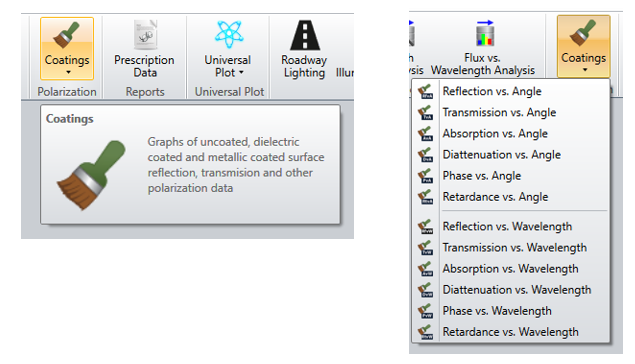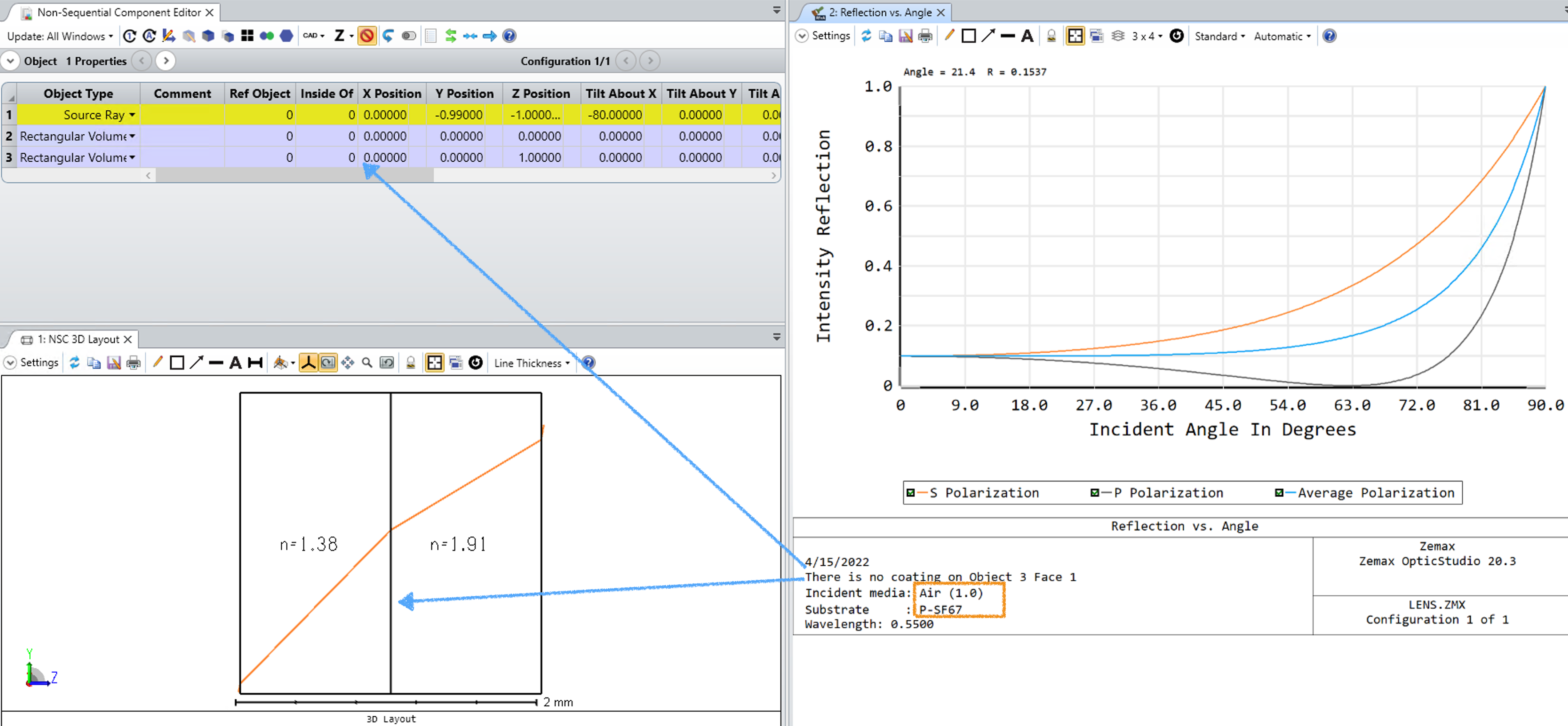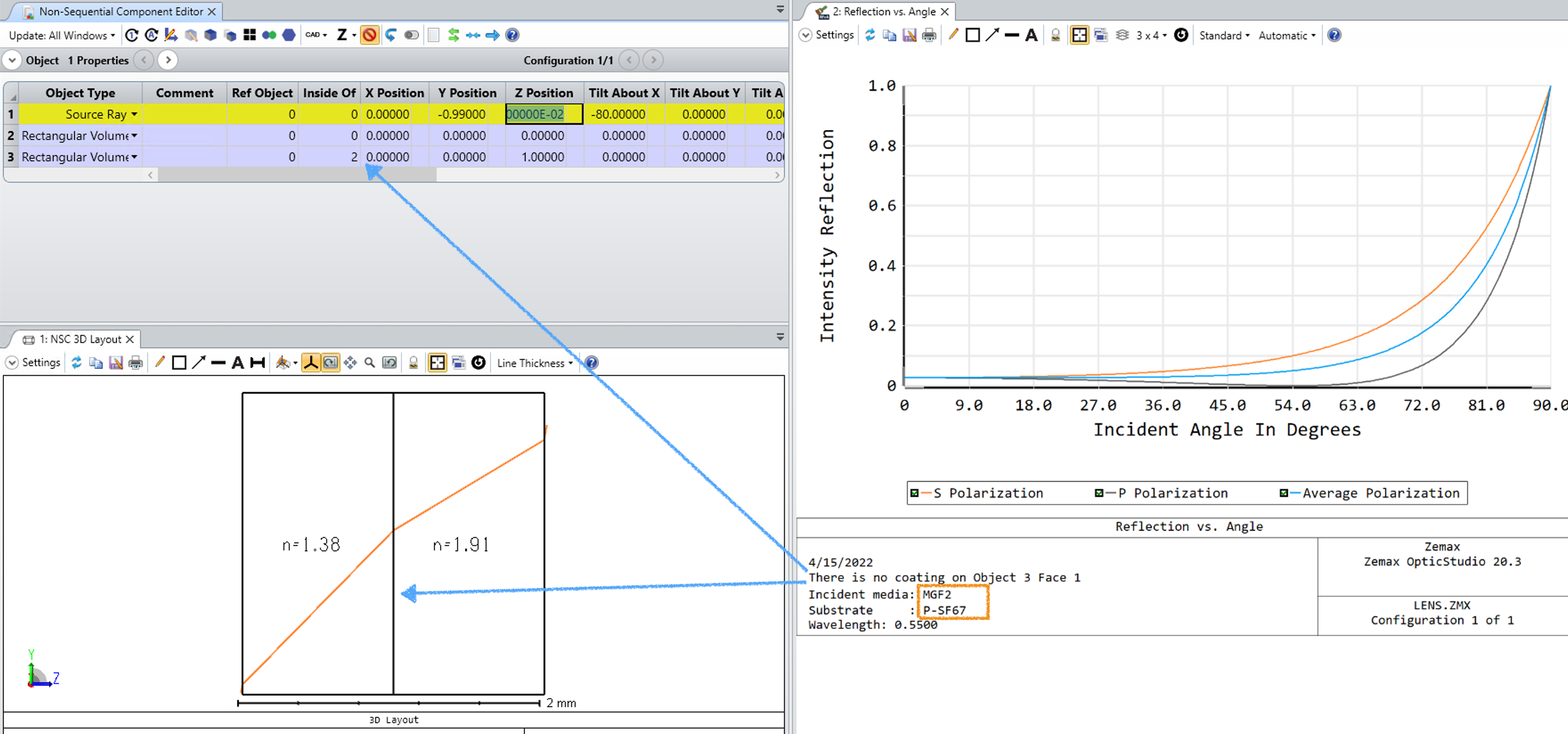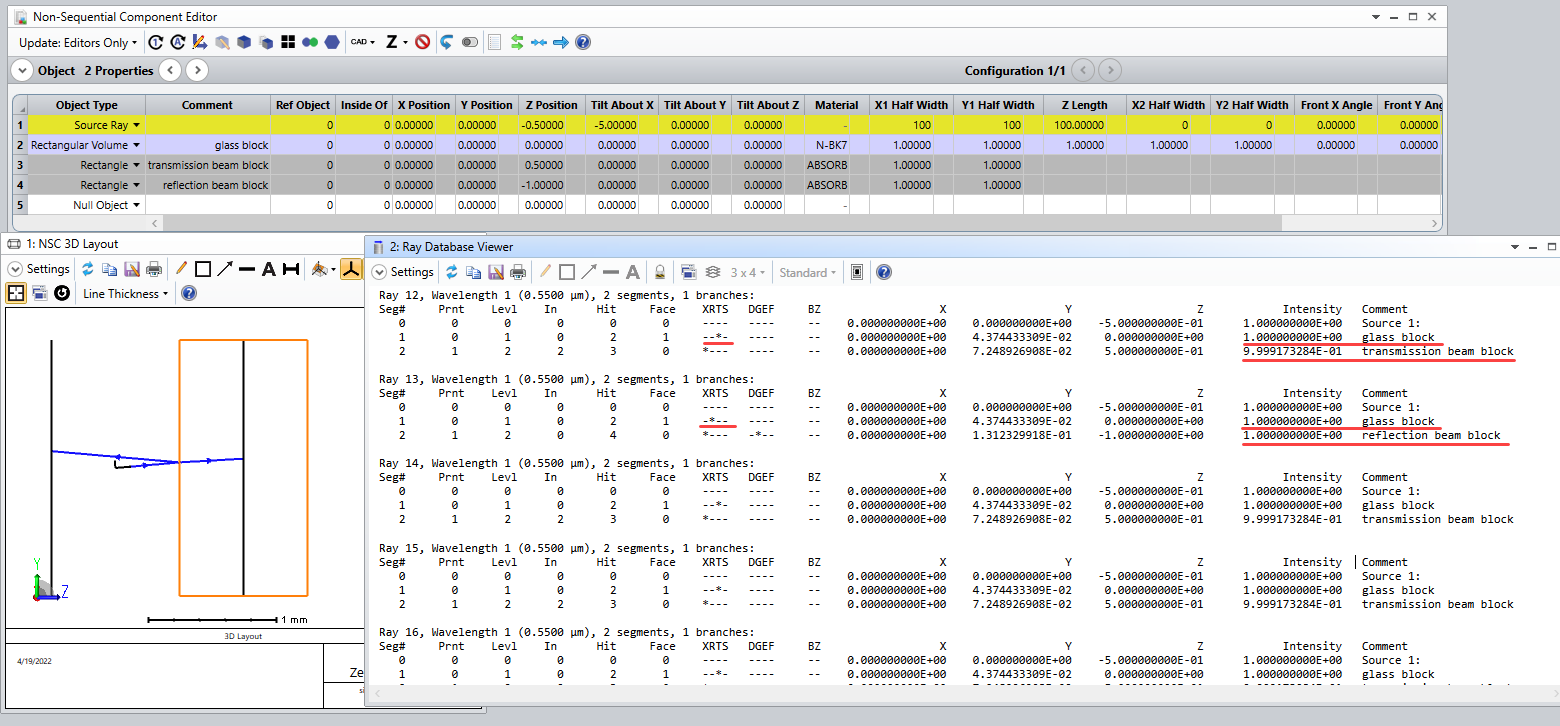Hi, reading the user’s guide i saw different plots of the Intensity Transmission and Intensity Reflection as a function of the incidence angle and polarization. How can I visualize these kind of plots? I’m working in non sequential mode and have different volumes. I would visualize, for instance, the plots for the surface between volume 3 and volume 4. I thought it would be easy, but i’ve never read about how to plot these functions.
Thank you in advance.













